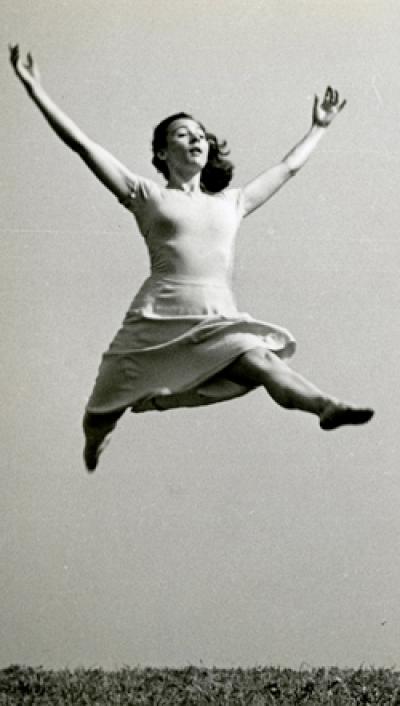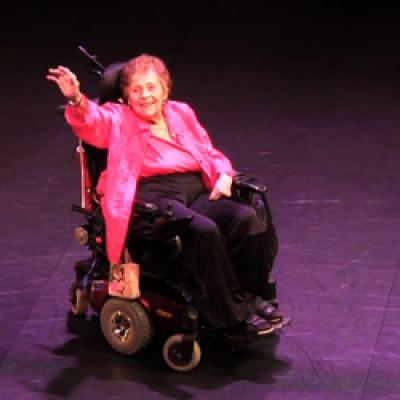By Dave Covey

As we celebrate Helen Alkire’s 100th birthday and reflect on the legacy of this remarkable department, I felt it appropriate that we also acknowledge the extraordinary women Helen was smart enough to assemble to help her build this ground-breaking program. It is impossible to include all of the people involved, so I will share my reflections on those with whom I was a student, then a colleague and now a friend. It is a story of a group of women who were willing to take a chance on me, an untrained body and mind, enabling me to realize a career and life that would not have happened without their love and support.
Huge Buckeye fans, if Helen was the head coach, Ann Lilly was the quarterback, defensive lineman and tackle all rolled into one. She was the muscle behind Helen’s intellectual vision, fighting for space, funding and faculty lines necessary to create what would become the Department of Dance. I know Helen was also at the line of scrimmage, ready to block any opponent who dared to stall their drive as they marched down the field but I firmly believe Ann was the leader in pass interceptions.
Lucy Venable and Odette Blum, among many things, were the queens of notation, forming one of the foundational principles of the department centered on dance documentation and Laban notation. In addition to teaching notation, they were sought after as notators in the field and I remember reconstructions of Jose Limon’s There is a Time and Kurt Joos’ The Green Table, which were performed by the students at Mershon Auditorium. They helped preserve the history of modern dance and provided a means to bring it alive in the present. Their work and their teachings will have a lasting impact on the field for generations to come.
Vera Maletic established the program as a leader in movement analysis. Her courses opened up the body and mind to move and think in ways never before imagined prior to taking her classes. And Vera, along with Lucy was instrumental in acknowledging and embracing this “new” dance technology that has become hugely prominent throughout our curriculum. Angelica Gerbes developed the history program for the department, bringing dance to light from its very beginnings all the way to the most recent contemporary forms. Her work solidified the importance of historical awareness and analysis and continues in earnest in a wide range of courses and research.

Vickie Blaine studied under Helen, and eventually joined the faculty and established the composition area of the curriculum, developing a pedagogy that is emulated throughout the country. She was an avid choreographer and directed the University Dance Company for many years. Upon Helen’s retirement, she succeeded her as chair and continued to lead the department as a Center of Excellence. Rosalind Pierson, ballet dancer extraordinaire, also was a choreographer and took over UDC when Vickie became chair. I was hired shortly thereafter and designedmany concerts in partnership with Rosalind at Mershon Auditorium. Ours was a partnership based in trust, which allowed me to develop tremendously as an artist.
Karen Bell succeeded Vickie as chair and it is Karen who enabled me to take an extensive leave when offered to go design for and tour with Merce Cunningham. This is without a doubt the greatest experience of my life and would not have been possible without Karen’s tremendous support.
And finally, there is Louise Guthman. A protégé of Tom Skelton, she was a pioneer in the male-dominated world of lighting design and production. In addition to working with many of the historically prominent figures of modern dance, she traveled the world over with the Ballet Folklorico de Mexico. Helen eventually offered Louise a position to establish a program in dance production and lighting design, the first in the country. When I studied lighting with Louise, I had my “Aha!” moment and realized what I wanted to be when I grew up. The rest as they say, is history.
Time has passed, they have all retired, we have a wonderful new facility in which to work and technology has totally transformed the way we do most everything. But these women remain the bedrock of principles of what dance in higher education is and what it will become. As time marches on and the challenges of old age rear its omnipotent head, they continue to reach out to help each other, working together today, to move the ball down the field, as they did over 60 years ago. So as we celebrate Helen’s 100th, we indeed celebrate the birthdays of all of these remarkable women.
